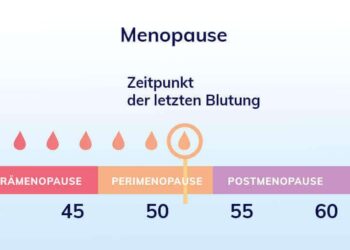Spain has joined the ranks of Greece, Denmark, Finland, Malta, France, and several other European nations in experiencing exceptional tourism growth in 2025. Drawing millions of visitors from around the globe, this surge is providing a significant boost to local economies and reaffirming Europe’s position as a premier travel destination. Industry experts highlight that renewed traveler confidence, expanded flight connectivity, and innovative tourism offerings are key drivers behind this upward trend, signaling a robust recovery and promising outlook for the continent’s hospitality sector.
Spain Emerges as a Leading Destination Amidst Europe’s Tourism Surge
Spain has solidified its position at the forefront of Europe’s tourism renaissance, attracting millions of travelers who seek its dynamic blend of vibrant culture, stunning coastlines, and historic landmarks. This surge in visitors is not only a testament to Spain’s appeal but also reflects broader trends across the continent where countries like Greece, Denmark, and Finland are witnessing record numbers in international arrivals. Key regions such as Andalusia, Catalonia, and the Balearic Islands have reported significant increases in overnight stays, contributing to booming local economies and revitalizing hospitality sectors that were once diminished.
The impact of this growth extends beyond just visitor counts, influencing employment rates and stimulating investment in infrastructure and sustainable tourism initiatives. Industry experts highlight several driving factors behind Spain’s success:
- Diverse Attractions: From the bustling streets of Barcelona to the serene beaches of Mallorca.
- Improved Transport Links: New high-speed rail routes and expanded airport capacities.
- Enhanced Safety Protocols: Building traveler confidence post-pandemic.
- Cultural Festivals and Events: Attracting niche markets and repeat visitors.
| Region | Visitor Increase (2024-2025) | Economic Boost (€ Billion) |
|---|---|---|
| Andalusia | 18% | 5.6 |
| Catalonia | 15% | 6.8 |
| Balearic Islands | 20% | 4.3 |
Economic Impact of Increased Tourist Arrivals on Local Communities and Businesses
Rural towns and urban centers alike are witnessing a surge in revenue as millions flock to Spain, joining the ranks of other leading European destinations. Local businesses, from family-run restaurants to artisanal shops, are benefiting significantly from increased foot traffic and consumer spending. Hotels and accommodation providers report near full occupancy throughout the year, enabling expansions and the creation of new jobs. Moreover, the tourism boom is encouraging investment in infrastructure, enhancing connectivity and public services that benefit both visitors and residents. Key economic benefits include:
- Boost in small and medium enterprise growth
- Higher tax revenues supporting community development
- Revitalization of cultural and heritage sites
- Enhanced opportunities for local artisans and producers
However, this upswing is not without challenges. While economic stimulation is undeniable, some communities face rising living costs and environmental pressures. To better understand the financial impact, consider the following snapshot of average yearly increases in revenue for local sectors in top Spanish tourist hotspots:
| Sector | Average Revenue Increase (%) |
|---|---|
| Hospitality & Accommodation | 38% |
| Retail & Souvenirs | 27% |
| Food & Beverage | 33% |
| Transportation Services | 22% |
Strategic Recommendations for Sustaining Growth and Enhancing Visitor Experience
To ensure the continued surge in tourism benefits both visitors and local communities, it is imperative to prioritize sustainable development practices alongside innovative visitor engagement. Investing in eco-friendly infrastructure and promoting off-peak travel can alleviate the environmental impact while distributing tourist footfall more evenly throughout the year. Additionally, enhancing digital platforms for real-time updates and personalized travel experiences will cater to the modern traveler’s expectations, fostering greater visitor satisfaction and loyalty.
Collaboration between public and private sectors is key to expanding cultural and recreational offerings. Focusing on community-based tourism initiatives helps preserve local traditions and supports small businesses, ultimately creating a more authentic and immersive visitor experience. The following table highlights strategic focus areas with potential action points that stakeholders should consider:
| Focus Area | Recommended Actions | Expected Outcomes |
|---|---|---|
| Infrastructure | Green transport, sustainable accommodation | Reduced carbon footprint, improved accessibility |
| Digital Innovation | Mobile apps, virtual tours | Enhanced visitor engagement, increased bookings |
| Community Involvement | Cultural festivals, local guide training | Preserved heritage, economic upliftment |
| Seasonal Distribution | Promote off-season attractions | Balanced tourist flows, sustained revenues |
In Summary
As Spain joins the ranks of Greece, Denmark, Finland, Malta, France, and other European nations in experiencing exceptional tourism growth in 2025, the continent continues to reaffirm its status as a premier destination for travelers worldwide. This surge in visitor numbers not only revitalizes local economies but also underscores the resilience and appeal of Europe’s diverse cultural and natural offerings. Industry stakeholders remain optimistic that sustained investment and strategic planning will further enhance the tourism sector’s contribution to regional development in the years ahead.
















